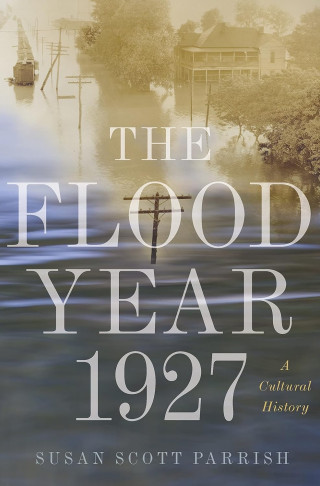On May 1, 1927, The New York Times announced: “Once more war is on between the mighty old dragon that is the Mississippi River and his ancient enemy, man.” Illustrating the story was a reprint of an 1868 Currier & Ives lithograph called “High Water in the Mississippi,” to which had been added the phrase, “In Days Gone By.”
Through the curtain-like trees, the 1927 viewer—perhaps a Manhattanite drinking her Sunday morning coffee—peeped at a gallant steamboat, a columned Great House, and a close-up scene of rural black people caught in a picturesque predicament of floating roofs and tugging mules; she saw, even as she looked at an image of catastrophe, a tableau bedecked in plantation nostalgia. To think of the South from the distance of Manhattan was somehow to think back—back to 1868, back to a storied river battle in 1863, or maybe all the way back to an “ancient” time when chivalrous men tilted at dragons. It was hard for Northerners to imagine the South as modern.
It was harder still for Northerners to see the news of 1927—the most destructive river flood in U.S. history—as an industrial disaster partly of their own making. After extreme weather swept from the plains states to the Ohio River valley in fall 1926, levees began bursting in the Lower Mississippi Valley in March of ’27 and kept breaking through May. In all, water covered 27,000 square miles, land in seven states where about a million people lived; 13 major crevasses occurred; roughly 637,000 people became homeless, approximately 555,000 of whom were racial or ethnic minorities; somewhere between 250 and 1,000 people died; and financially, direct property losses totaled $250 to 500 million, while indirect losses brought that figure up to $1 billion. Floodwaters did not fully drain until the end of the summer.
The flood’s most dramatic moment occurred on April 29, when authorities—hoping to protect New Orleans—dynamited the levee 13 miles below the Crescent City at Caernarvon in order to flood the relatively less populated Acadian region of St. Bernard and Plaquemines parishes. The black-and-white photograph of the blast, with earthworks catapulted skyward, look like a scene from the Great War in Europe.

